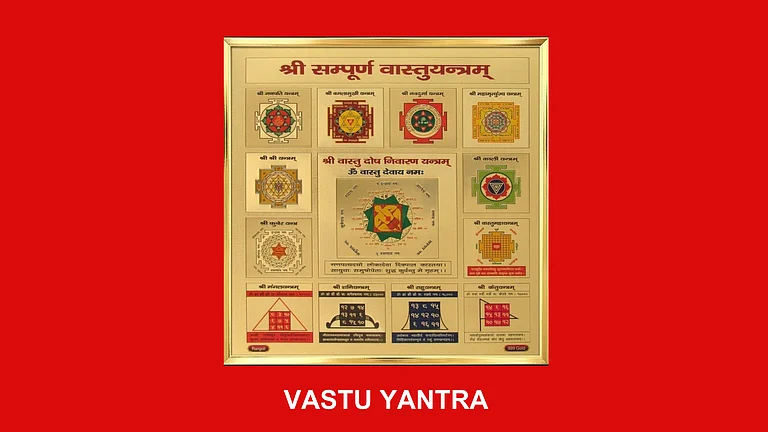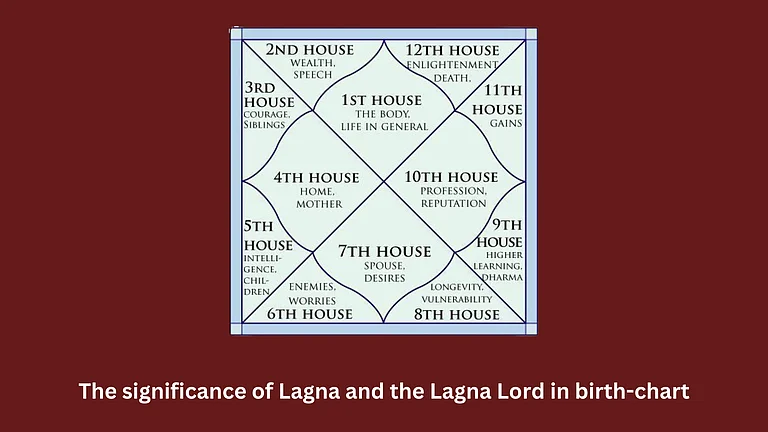In Indian culture, Raksha Bandhan is a very important festival that honours the bond between brothers and sisters. The festival of Raksha Bandhan takes place on the day of the full moon in the month of Sawan which means it's in August. On Raksha Bandhan, siblings celebrate their bond by the sister tying a sacred thread, known as a "Rakhi," around her brother's wrist, while he pledges to protect her in return. Brothers give gifts to their sisters on this day as a token of their love.
Raksha Bandhan 2024: Date, Significance, History and Astrological Insights You Need To Know
The festival of Raksha Bandhan, which honours the bond between siblings by tying a Rakhi and giving each other gifts, will be celebrated on August 19, 2024. Read on to find out when the right time is to do Rakhi traditions.
.jpg?w=801&auto=format%2Ccompress&fit=max&format=webp&dpr=1.0)
This time, Bhadra is in the shadow of the full moon of the month of Sawan. In such a situation, Bhadra will also be there at the festival of Raksha Bandhan. When Bhadra is there, the importance of the right time to tie Rakhi increases a lot. In such a situation, let us check when is Raksha Bandhan this year and at which auspicious time on this day sisters can tie Raksha Sutra, i.e., Rakhi, on the brother's wrist. The festival has deep cultural, historical, and astrological significance. Let’s delve into the details of Raksha Bandhan 2024, its rituals, history, and the astrological insights that make this day even more special.
Date & Shubh Muhurat (Auspicious Timing):
This year the full moon date of the month of Sawan starts on 19th August, Monday, at 3:04 am and ends at 11:55 pm on the same day. Hence, the festival of Raksha Bandhan will be celebrated on 19th August, Monday.
Shubh Muhurat
| Rakhi Tying Time | 09:20 AM to 09:21 PM |
| Auspicious Time (Abhijit Muhurat) | 11:59 AM to 12:49 PM |
| Aparahan Time? | 01:57 PM to 04:32 PM |
To get the blessings of the Gods and a strong bond between brothers, the Rakhi must be tied during the Shubh Muhurat.
Why do people celebrate Raksha Bandhan?
The meaning of Raksha Bandhan is "the bond of protection," which comes from various legends and mythological stories; each story became popular and highlights the importance of the sibling bond.
Mythological Stories of Raksha Bandhan:
Draupadi and Krishna: Among various stories, one of the most well-known stories about Raksha Bandhan is of Draupadi and Lord Krishna. Krishna promised Draupadi that he would help her when she needed it, and Draupadi tore a piece of her saree to put over his bleeding finger. That's when the tradition of Raksha Bandhan began.
Yama and Yamuna: Another popular one is of Yama and Yamuna. The story says that Yamuna, the river goddess, gave her brother Yama, the god of death, a Rakhi. Yama was moved by her love and devotion, which made her forever. He also said that brothers who get Rakhis from their sisters and promise to protect them will also live long lives.
Indra and Sachi: When the gods and devils fought, Indra's wife Sachi wrapped a protective thread around his wrist. This made sure that he would win. This story shows how powerful the Rakhi is as a safety string.
Cultural Significance:
This festival, Raksha Bandhan, isn't just for biological ties. In many places, women tie Rakhis to their friends, neighbours, and even soldiers to show that they care about them and want to protect them.
Rituals and History:
The Ritual of Raksha Bandhan:
Many customs and traditions go along with Raksha Bandhan. Every custom has its own depth and meaning.
1. Preparation of the Rakhi Thali:
Firstly, all sisters arrange to prepare a Rakhi Thali. On that Rakhi Thali, there will be Rakhi, rice grains, vermillion (kumkum), sweets, and a diya (lamp). The thali is used for the ceremony of Rakhi.
2. The Rakhi Ceremony:
Usually, the sisters worship their brothers first by doing an Aarti. Next, they put a tilak on his face, which is a sign of protection and a holy touch. Finally, they tie the Rakhi around their wrist. Praying for the brothers’ health and long life goes along with these rituals. In return, the brothers give gifts to their sisters and vow to protect their sisters.
3. Feasting and Celebrations:
On that day, usually, sisters keep fasting. All the members of the family celebrate these joyous rituals with sweets, gifts and happiness.
The History of Raksha Bandhan:
The background of Raksha Bandhan goes back hundreds of years and it can be found in ancient texts and scriptures in details.
The Mughal Period: During the Mughal era, the holiday became more well-known after Rani Karnavati of Chittor sent Mughal Emperor Humayun a Rakhi to ask him to protect her from invaders. Humayun was moved by her kindness, so he honoured the Rakhi and helped her.
The Partition of Bengal (1905): During the British divide-and-rule policy in Bengal in 1905, the great Indian leader Rabindranath Tagore used the holiday of Raksha Bandhan to encourage Hindus and Muslims to be brothers and stand up to the British policy.
Astrological Significance of Sacred Threads:
According to Vedic astrology, the Rakhi is more than just a thread. It is a holy object that is filled with strong protective forces. Astrologically speaking, the act of tying the Rakhi on Raksha Bandhan has a lot of importance because of the cosmic energies that day.
The Power of the Full Moon (Purnima):
Raksha Bandhan is celebrated on the day of the full moon of Shravan. The moon is in its strongest position at this time. The full moon can help you feel emotionally balanced, clear, and spiritually powerful. People believe that tying the Rakhi at this time will use the power of the moon to protect and bless the person who wears it.
Influence of Planetary Positions:
The positions of the planets on Raksha Bandhan can also impact the effectiveness of the Rakhi.
Sun and Moon Alignment: The alignment of the Sun and Moon during Raksha Bandhan is considered auspicious. The sun, representing authority and protection, and the moon, symbolising empathy and assistance, come together to enhance the bond between siblings.
The role of Mars: Another important world is Mars, which is known for being brave and safe. This Rakhi can protect you even more if Mars is strong in your birth chart on this day.
When should the Rakhi worn on Raksha Bandhan be removed?
According to religious beliefs, tying a Raksha Sutra on the wrist increases luck. The Rakhi tied on the day of Raksha Bandhan should be kept tied at least till Janmashtami. You can tie a Rakhi even after Janmashtami, but if you want to remove the Rakhi, then it should never be thrown here and there after removing it. Rather, the removed Rakhi should be kept near a holy plant or tree or should also be floated in a river.
So, in a wider sense, Raksha Bandhan is a celebration that stands for the values of love, care, protection, and respect that apply to everyone, not only just for the family members but beyond the family also. These values include the well-being of society. as a whole. It reminds us of our duties to each other and encourages kindness and unity both.




























